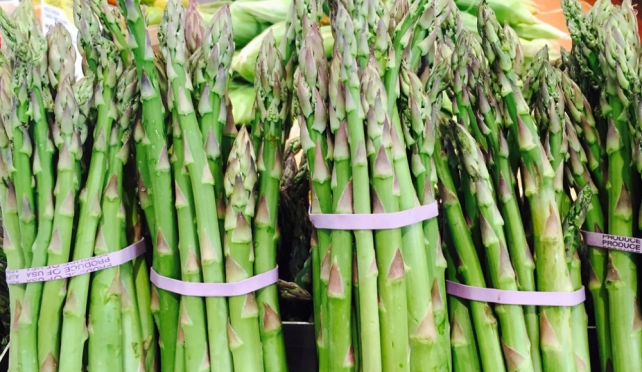By Chela Cooper
It’s a wonderful time of year at Great Kids Farm with some new additions, including a small flock of baby chickens. The chicks are all hens of two varieties - Buff Orpington and Rhode Island Red. We expect them to start laying eggs in a few months.
My favorite new planting this year is asparagus. Asparagus is a perennial vegetable that requires a few years to get established, but can yield plentiful harvests for years to come. With proper care and a little luck, we’ll have an “asparagus forest” of tall, tender, green stalks pop up each year in the early spring to be observed and enjoyed for a generation of students from Baltimore City Public Schools.
Eggs and asparagus are classic ingredients in many popular dishes, including this easy recipe for a spring frittata. This frittata can be made in as little as 30 minutes, with most of the time in the oven. This recipe can be made in a 10-inch cast iron skillet. If you don’t have one, the veggies can be sautéed in any skillet and the frittata can be baked in any 2 quart casserole or baking dish.
When selecting a fresh bunch of asparagus, look for plump, straight stalks. Thinner stalks will be more tender and “sweet”; fatter stalks will have a “meatier” texture and a stronger asparagus flavor. Skip asparagus if the stalks are limp or have wrinkled skin, which are signs that the vegetable is past its prime. Be sure to examine the cut end of the stalks. Asparagus with excessively dry, woody, or split stalks usually indicates that the vegetable was harvested some time ago and has dried out. Although asparagus can be kept in the fridge for a few days, the taste and texture are best when used as soon as possible.
To clean asparagus, rinse the stalks under cool water to make sure they are free of dirt and grit. To remove the tough, woody part of the stem which is rather unpleasant to eat, snap off about an inch or so from the bottom of each stalk. If you’re in a hurry, the ends of the whole bunch can be sliced off with a knife.
The measurements for herbs in this recipe are for fresh herbs, which you may have in your garden or can easily find in the produce section of your grocery store or at the farmers market. If you don’t have fresh herbs, you can use dried herbs, but you’ll only need about half of the amount listed in the recipe.
This is a great recipe to make with kids who can help with shopping for ingredients at the store or farmers market, harvesting veggies or herbs from the garden, snapping off the tough ends of asparagus stalks, cracking and beating the eggs, measuring ingredients, and cleaning up. Frittata is hearty enough for a weekend breakfast, fancy enough for a special occasion brunch or potluck, and quick enough for a healthy weekday dinner. Leftovers can be refrigerated an eaten for lunch or an after school snack. Enjoy!
Spring Frittata
Ingredients:
8 large eggs
½ cup milk
½ teaspoon salt
½ teaspoon pepper
2 tablespoons fresh chopped dill
1 tablespoon fresh thyme
2 tablespoons fresh chopped scallions or chives
1 small onion, peeled and diced
1 pound asparagus, cleaned and cut into ½ inch slices
1 pound fresh baby spinach
3 tablespoons olive oil
To Prepare:
- Preheat oven to 375F.
- Crack the eggs into a large mixing bowl. Add the milk, salt, pepper, dill, thyme, and scallions or chives. Whisk just until blended, then set aside.
- In a large skillet over high heat, sauté the onions in olive oil for about 5 minutes until they are soft.
- Add the sliced asparagus and continue to cook on high heat, stirring occasionally until the asparagus is tender (about 2 – 4 minutes, depending on the thickness of the asparagus).
- Add the baby spinach and continue cooking for 1-2 minutes, just until the spinach wilts.
- If you are using a large cast iron or other oven-safe skillet, gently pour the egg mixture into the pan around the sautéed vegetables; then place the skillet in the hot oven. Otherwise, transfer the prepared vegetables into a 2 quart baking dish, then pour in the egg mixture and place the baking dish in the hot oven.
- Bake the frittata until the center is set and the edges are slightly brown and pull away from the side of the pan, about 20-25 minutes.


